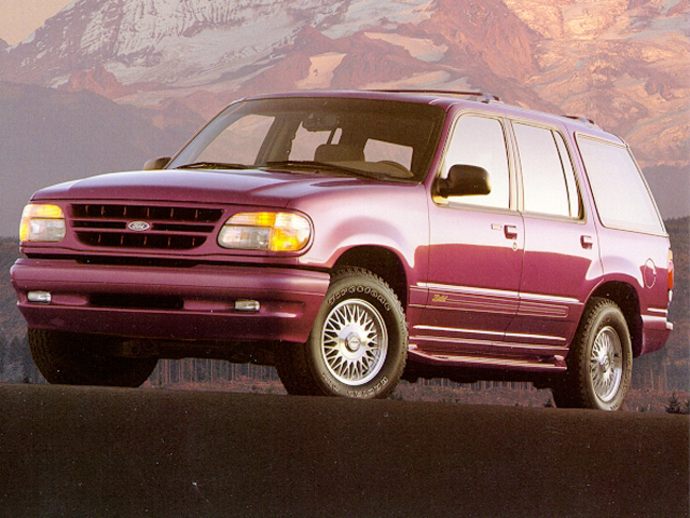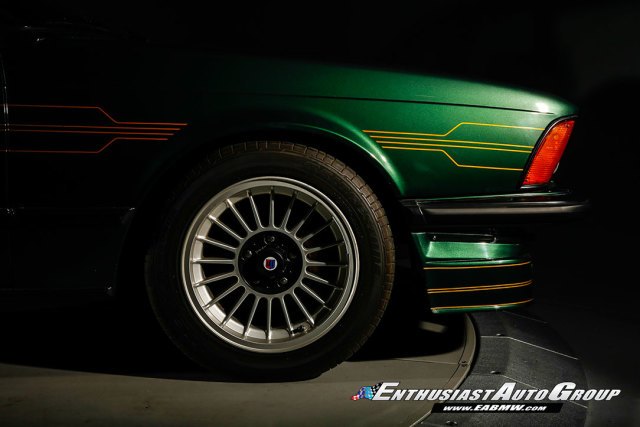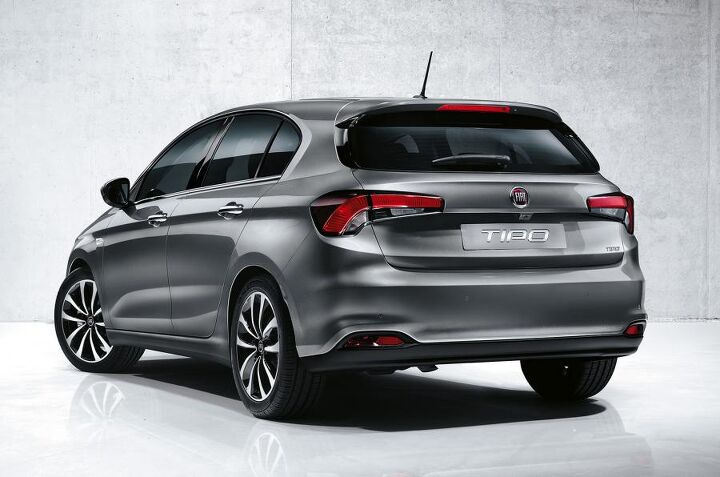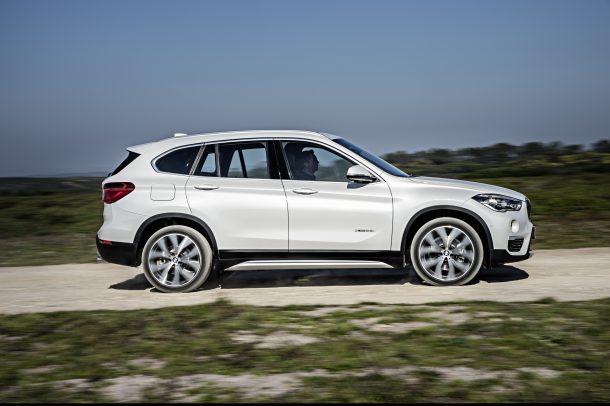#Europe
Old Hat: European Sale of Diesel Cars Overtaken by Gasoline for the First Time Since 2009
Diesel-powered passenger vehicle sales have fallen in Europe. Data from the European Automobile Manufacturers Association (ACEA) showed diesel’s year-over-year market share plummeting in the first half of 2017, sinking from 50.2 percent to 46.3 percent of all new car registrations in the EU.
Helped by negative publicity and governmental intervention, it’s the first time diesels have dipped below the 50 percent mark since 2009. ACEA’s figures indicate 152,323 fewer diesel cars sold so far in 2017, attributing some of the decline to a renewed interest in gasoline-powered vehicles. Of course, if you aren’t buying diesel, you don’t have a lot of other options.
Still, deliveries of “alternative” vehicles — which include hybrid, electric, and natural gas-powered automobiles — also rose by more than 35 percent. Those categories now account for 5.2 percent of Europe’s total auto sales.
Rare Rides: Ferrari-Powered 1991 Lancia Thema 8.32, the Superior Sister of Saab and Alfa Romeo
It would be understandable if the Lancia Thema you see above put you immediately in mind of a Rare Ride from a few days ago, the gold-plated DeLorean DMC-12. While that car had an entirely different purpose from the Lancia you see before you, the two did have a couple of things in common. Both were designed by Italian legend Giorgetto Giugiaro. And like the DeLorean, the Lancia also suffered (in normal trims) with the same Peugeot-Renault-Volvo V6 engine that made Eagle Premier owners miserable.
But that’s where the similarities end. Because today’s Thema sheds its multinational, mediocre V6 power for some purebred Ferrari horses. And you don’t even have to do the import paperwork.
Evidence Exhibit #127 In the Case of Market V. Small Cars: Volkswagen Considering Pulling the Up City Car From Europe
The global auto industry is not a place in which small car production is as straightforward as it was a decade or two ago.
Brought closer to home, Americans are buying roughly 30-percent fewer subcompact cars now than they were just three years ago. With next to no fuel economy advantages; limited payment upside; and less refinement, power, and space, why would a car buyer choose a subcompact over a compact sibling? Most buyers don’t. In the United States, compact car sales are five times stronger than subcompact sales. August’s top three compacts (Civic, Corolla, Cruze) outsold their subcompact brethren (Fit, Yaris, Sonic) by more than seven-to-one.
Many automakers don’t even bother selling their smallest cars in North America. Mazda’s latest 2 never saw U.S. import. FCA has left the compact market, having long since left the subcompact sector to rivals. Subaru doesn’t dive below the Impreza platform. And Volkswagen stops at the Golf, leaving the subcompact Polo for more small-car-friendly countries.
But how keen on small cars are those other countries? In some instances, not keen enough. Volkswagen boss Herbert Diess tells Autocar, “Selling small cars is not easy.” And he’s clearly not just talking about F-150-loving America. “It’s a very European problem,” says Diess. As a result, the Volkswagen Up city car, a Lupo successor, may pull out of Europe in favor of emerging markets only.
Rare Rides: The 1983 DeLorean DMC-12 - a Gold-plated Opportunity?
The DeLorean DMC-12 is forever linked to the classic film Back to the Future, where the stainless steel wonder was converted into a conveyance for the purposes of time travel. But the silver screen was not the only place the DMC-12 underwent a transformation. A certain credit card company had a PR stunt in mind that saw the DeLorean plated with 24-carat gold.
Our Rare Ride today is what happens when a private owner attempts the same thing.
U-turn on the Autobahn: Merkel Sees Germany Putting the Boots to Internal Combustion
After a lot of back and forth on citywide diesel bans and loads of corporate scandal, the German automotive industry has taken a public beating. However, with a few politicians still left in its corner, it’s managed to avoid some of Europe’s anti-combustion wrath. Proposed diesel bans haven’t yet come into effect, but there remains a strong contingent to force change with Chancellor Angela Merkel suddenly taking a greener stance as an election looms.
There’s no shortage of controversy surrounding Europe’s automotive industry, and much of it surrounds environmental issues. The public solution is to move away from fossil fuels and promote electric vehicles through regulatory action within the next few decades — an idea Merkel now openly supports.
“I don’t want to name an exact year,” she said in a recent interview with SUPERillu. But she also believes Britain and France’s plans to phase out internal-combustion cars by 2040 is “the right approach.”
The Sport Utility Vehicle: America's Gift That Keeps on Giving
Not to sound overly patriotic or offend my Canadian coworkers, but United States is responsible for giving the world so much greatness that it’s difficult not to get a little misty eyed when I stop to think about it.
America’s long history of inventiveness has blessed the globe with modern marvels like sunglasses, chewing gum, kitty litter, the atomic bomb and, of course, sport utility vehicles. While the atomic bomb doesn’t get much broad praise these days, the rest of the aforementioned items are exceptionally popular outside the nation’s borders — especially SUVs and their bastard offspring, the crossover.
In fact, they’ve been such a runaway success that SUVs accounted for over 25 percent of all European passenger vehicle sales in 2016. That’s up from 21 percent in 2015 and there’s no sign of it stopping anytime soon. Sport utility vehicles are expected to surpass a third of the region’s new vehicle market by 2020. Assumedly, America’s own SUV sales will be hovering around 100 percent by then — maybe more. But let’s not discount how crossover-crazy the rest of the globe has become or forget to remind ourselves that most of the world’s best-selling SUVs aren’t exactly “Made in America.”
Domestics Abroad: Part II - Chevrolet's Foreign Fare
Today we feature the second entry to our Domestics Abroad series. Here’s where we take a look at the international models proffered around the world that wear a domestic company’s badge on the grille, but are not offered in their brands’ domestic markets. This is ground zero for “you can’t get that here.” All nameplates you’ll see in this series are current production models.
We kicked off this series with Ford, and its 13 qualifying models. Our second entry is Chevrolet, which also places second in number of models.
Here are Chevrolet’s nine entries, in alphabetical order:
QOTD: The Most Daring Automaker of the 1990s?
Back in late May of this year, I inquired which modern automaker was the most daring. While I posited it could be Nissan or Volvo, many of you replied it was actually Dodge, followed by Kia and Mazda.
This week, let’s turn back the clock a couple of decades and see if all our answers require a bit of reworking. We’re off to everyone’s favorite car decade, the 1990s. Which automaker was most daring in the era of the neon and teal fanny pack? I’ll give you two specific model examples, much like I did before.
Rare Rides: The Special 1988 Alpina B7S Turbo Coupe in Tartan Plaid
The glorious green Alpina coupe before your eyes nets three firsts for the Rare Rides series. It’s the first coupe coated in any shade of green paint, the first BMW, and indeed the first German vehicle in the series (I don’t count last week’s Rolls-Royce as German, though you might).
Time for some eye candy.
Can EVs Survive Without a Government Check or Tax Break? Not in Denmark
Despite the protestations of many members of the green car crowd, dollars and cents do seem to play a major role in the motivation to purchase an electric or plug-in hybrid vehicle. Right now, EV proponents and domestic automakers are worried the U.S. won’t renew the green car tax credit — a segment-boosting incentive that shaves thousands off the price of a new electric vehicle.
Some would argue if green car buyers are really devoted to the planet’s health, purchase price wouldn’t be an issue (assuming the buyer’s bank balance is sufficient). Individuals being what they are, motivations and circumstances will vary. Still, no one can argue that a tax credit doesn’t sweeten the pot, just as dealer incentives on the hood of a truck help move sluggish inventory.
In Denmark, however, lawmakers have discovered that once-steady sales of EVs will slow to a trickle when green vehicle buyers are treated like regular car buyers.
You Know The Future For Mini MPVs Is Bleak When Even The Europeans Don't Want Small Vans
America’s mini-MPV market is dead. It was hardly ever alive.
Canada’s mini-MPV market is dying. The Chevrolet Orlando couldn’t make a go of it. Kia Rondo and Mazda 5 sales are 80-percent lower than they were a decade ago.
And if ever you thought North America’s mini-MPV market could be regenerated based off the strength of Europe’s compact minivan segment, you thought wrong. Even the Europeans — long lovers of small, family-friendly vehicles with affordable price tags, economical engines, and notable space efficiency — are turning away from mini-MPVs. In droves.
Why buy a minivan when you could have a rugged off-roader instead?
Ford is Trying to Stop Your Kids From Puking
Few things are more annoying than trying to extract vomit from cloth upholstery while pulled over at a gas station. Depending on the meal that preceded the involuntary stomach evacuation, it could be a tough slog.
Ford Motor Company, always one for innovation, is actively seeking out ways to reduce instances of lost lunches and tossed cookies. No, it hasn’t installed a “turkey dinner” mode on its Fusion Sport, but it has put its German research and development team on the case.
It's Raining Fiats … on Dealers That Already Can't Move Them: Report
Say you’re a dealer with a backlog of slow-selling models. What’s the last thing you would want?
The correct answer would be a springtime deluge of more of the same, whether you asked for it or not. That’s what some angry retailers across the Atlantic are facing after Fiat Chrysler Automobiles dumped 6,000 anemic sellers into Italian dealer management systems at the end of February.
More Models and Soon: Daimler Promises to Amp-up Its Electric Vehicle Program
After a Wednesday announcement stating it had failed to cut fleet emissions for the first time since 2007, Daimler has promised to expand its electric vehicle program and shorten the timeline. However, the automaker isn’t willing to shoulder all the blame for not being green enough. Consumer trends have shifted strongly toward larger, less efficient crossovers and SUVs in recent years. Daimler knows this better than anyone with global sales of the Mercedes-Benz GLA, GLC, and GLE gradually replacing its more-stagnant sedan deliveries.
Still, Europe has set very specific emissions requirements and the German company has fallen behind. It’s time to make amends by publicly promising new electrified models and a corporate goal closer to the state-sponsored pollution target.
SUV Popularity Isn't Exclusive to North America; Crossovers Are Now 25 Percent of Europe's Market
Europe always seemed like a safe haven for the sort of car lover who turns up their nose over North America’s obsession with the sport utility vehicle. That’s now changing, as European demand for SUVs and crossovers continued to grow in 2016. While it may have a penchance for slightly smaller models, the EU saw disproportionately high sales of compact crossovers last year.
In total, SUV sales accounted for 25 percent of all European passenger vehicle sales in 2016 — up from 21 percent the previous year. That doesn’t quite equal the United States’ fervent addiction but, if the European Union keeps this pace, it’ll be less than a decade before it closes the gap.






























Recent Comments